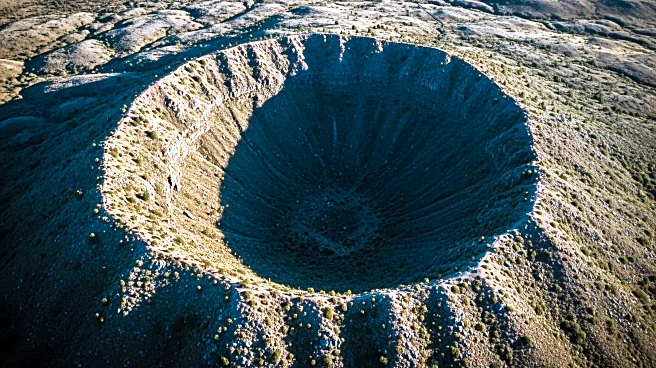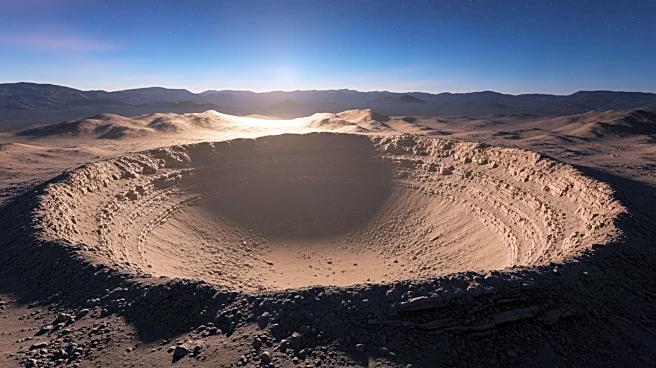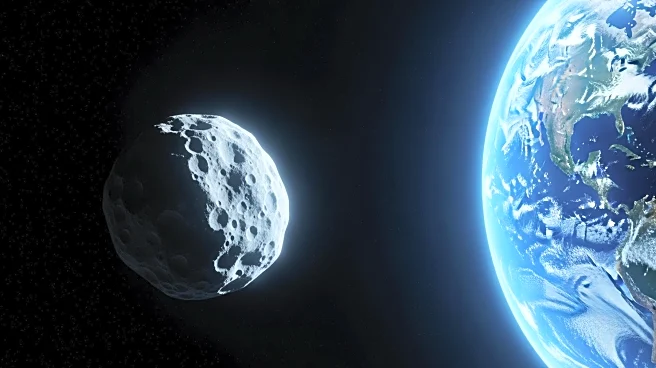What's Happening?
Researchers from Shanghai and Guangzhou, China, have discovered the Jinlin crater, the largest modern impact crater on Earth, located in Zhaoqing, Guangdong Province. The crater, formed during the early-to-mid Holocene epoch, measures approximately 900
meters in diameter and 90 meters deep. The discovery was published in the journal Matter and Radiation at Extremes. The crater's preservation is attributed to granite layers containing quartz with planar deformation features, indicating intense shock pressures unique to celestial impacts.
Why It's Important?
The discovery of the Jinlin crater provides significant insights into Earth's impact history, offering a basis for studying the distribution and geological evolution of extraterrestrial impacts. It challenges previous assumptions about the scale of impacts during the Holocene epoch, suggesting a greater frequency of celestial events than previously recorded. This finding contributes to the understanding of Earth's geological processes and the potential risks posed by future meteorite impacts.















